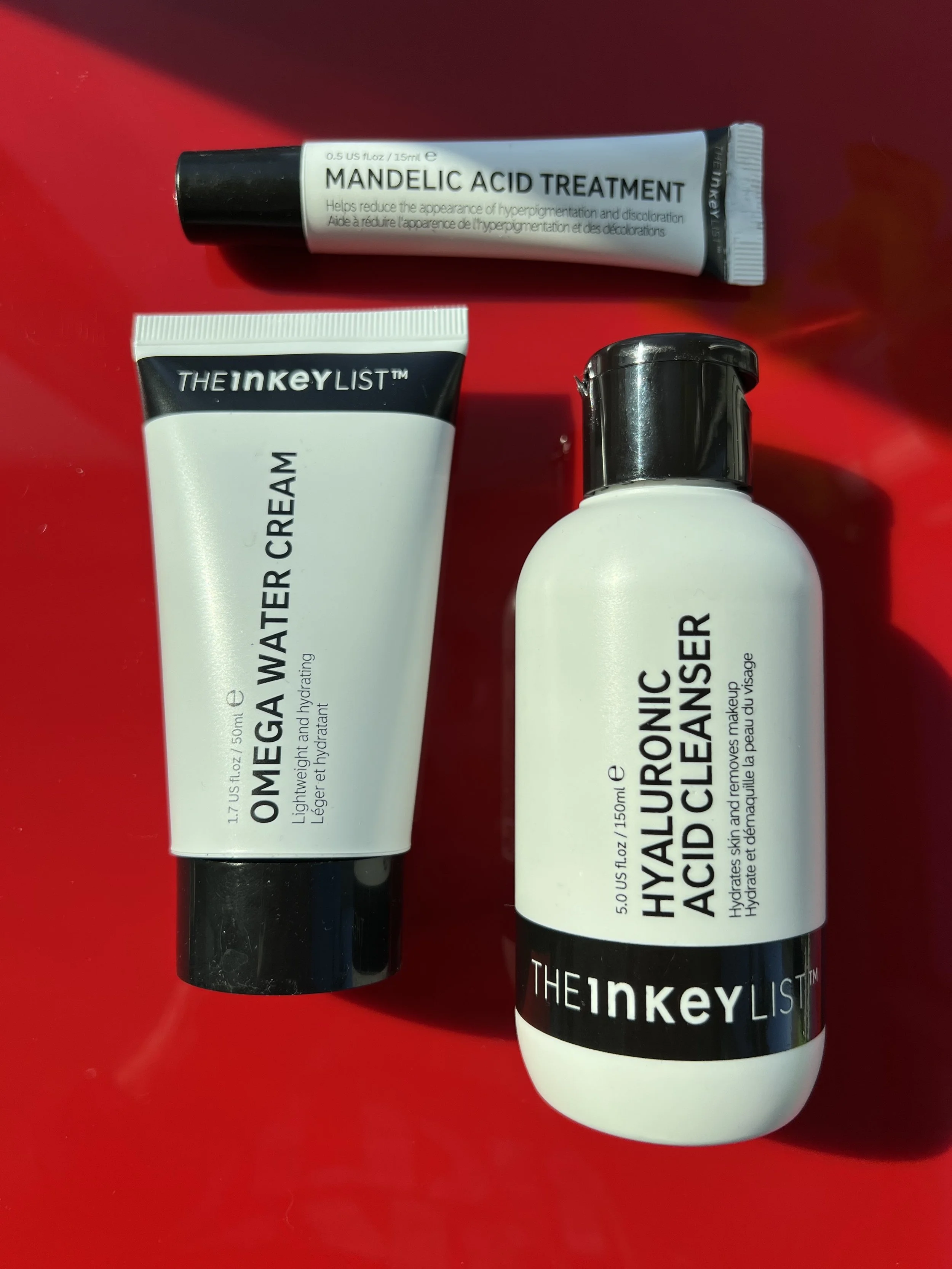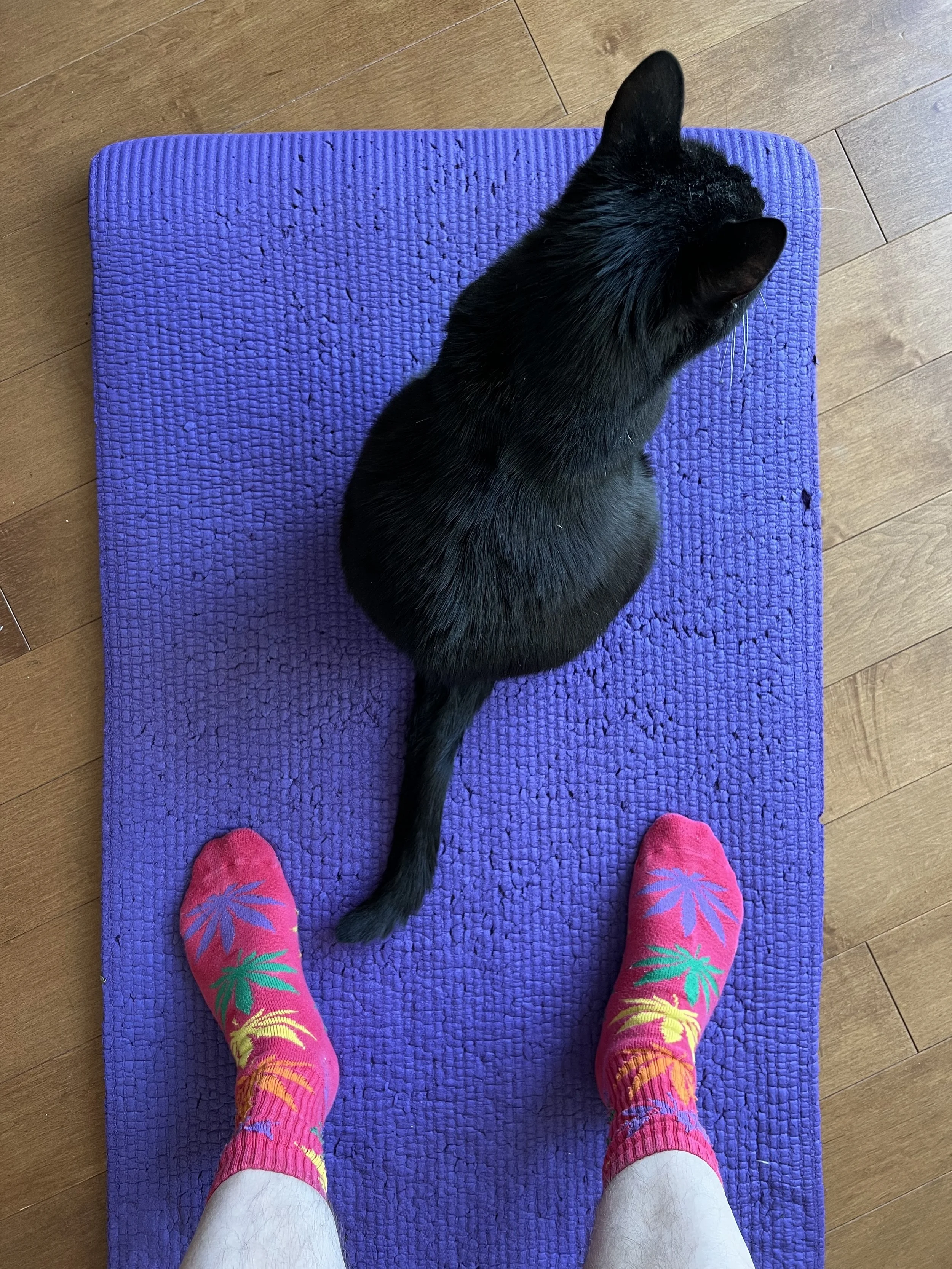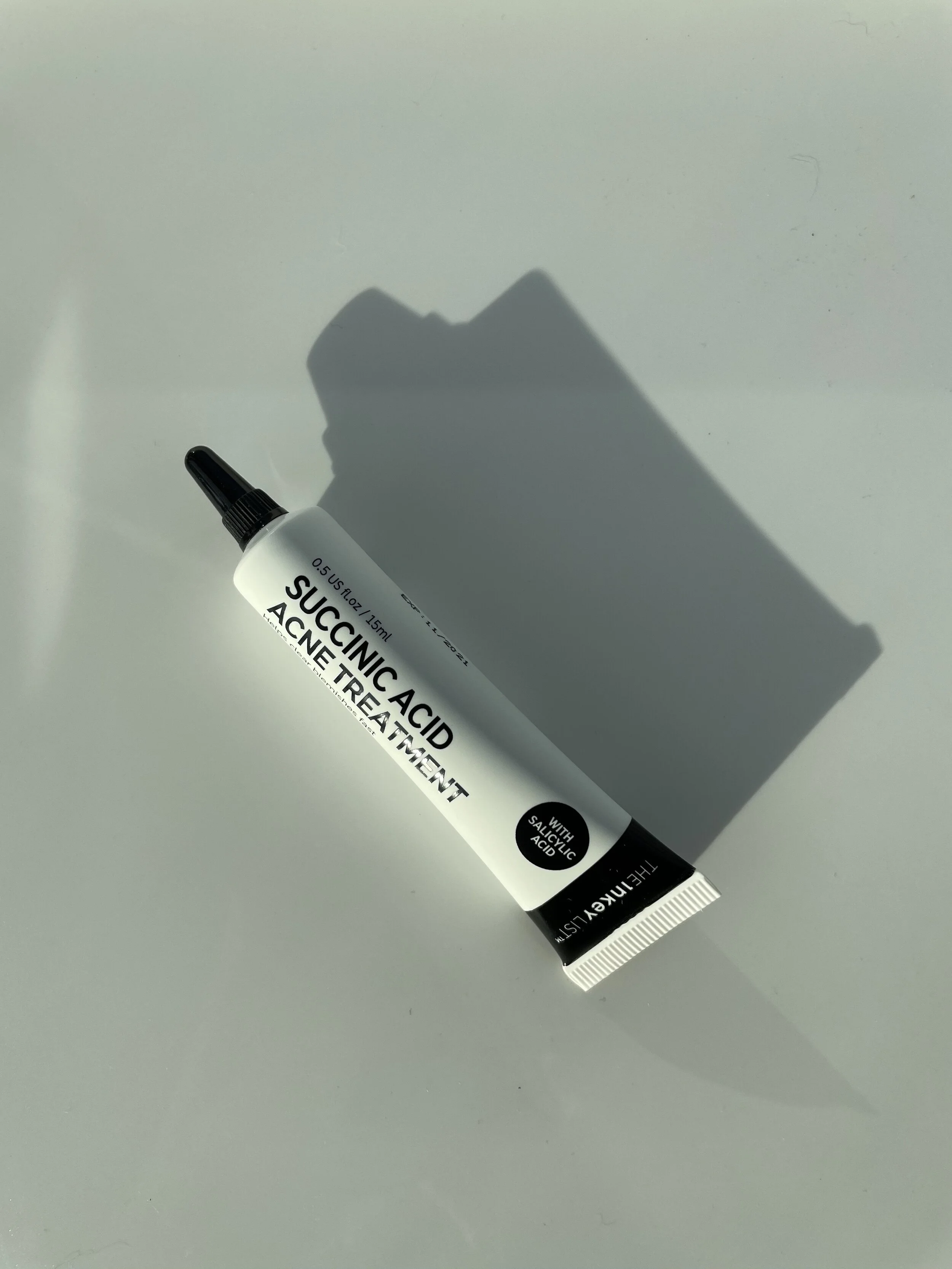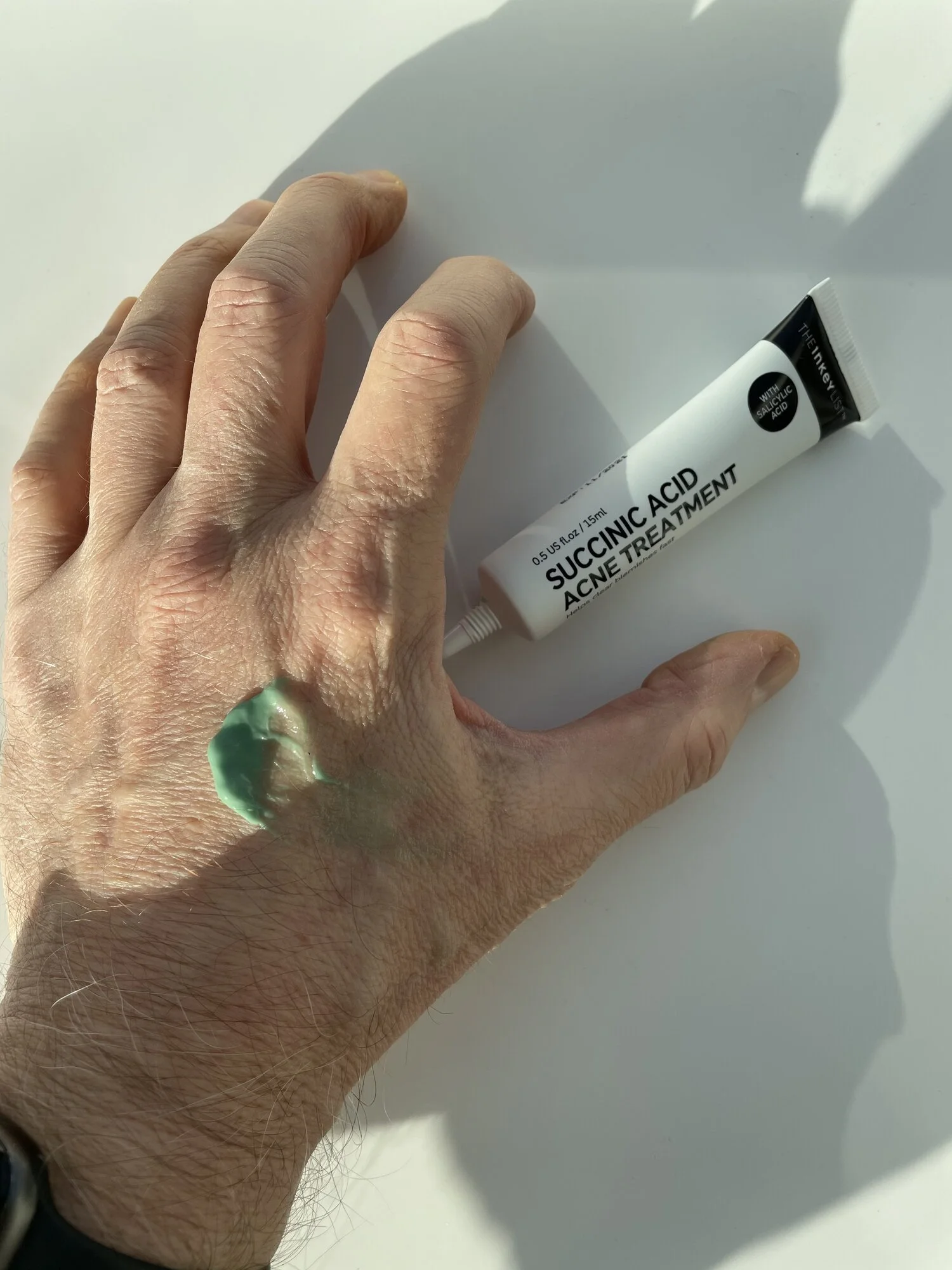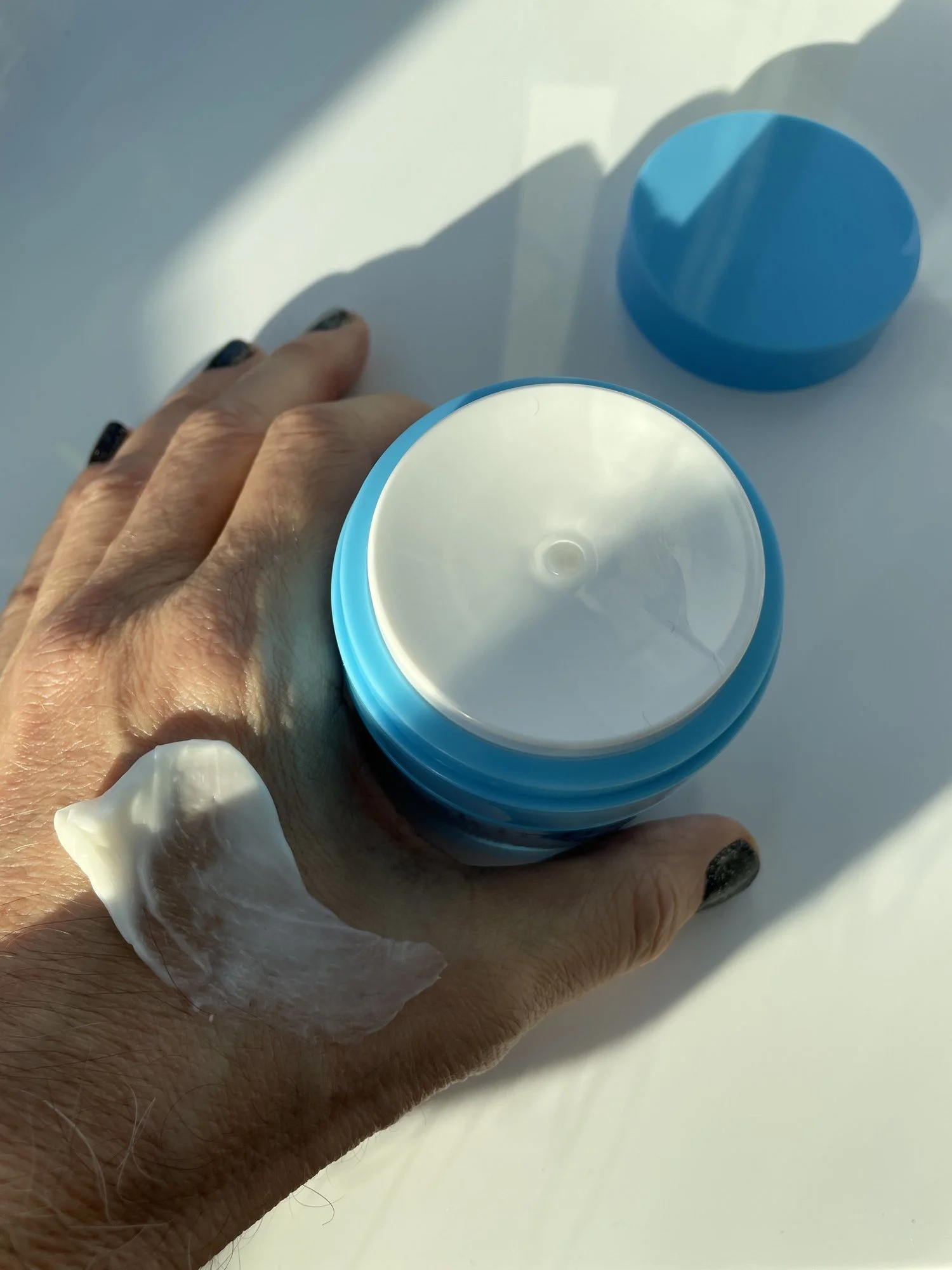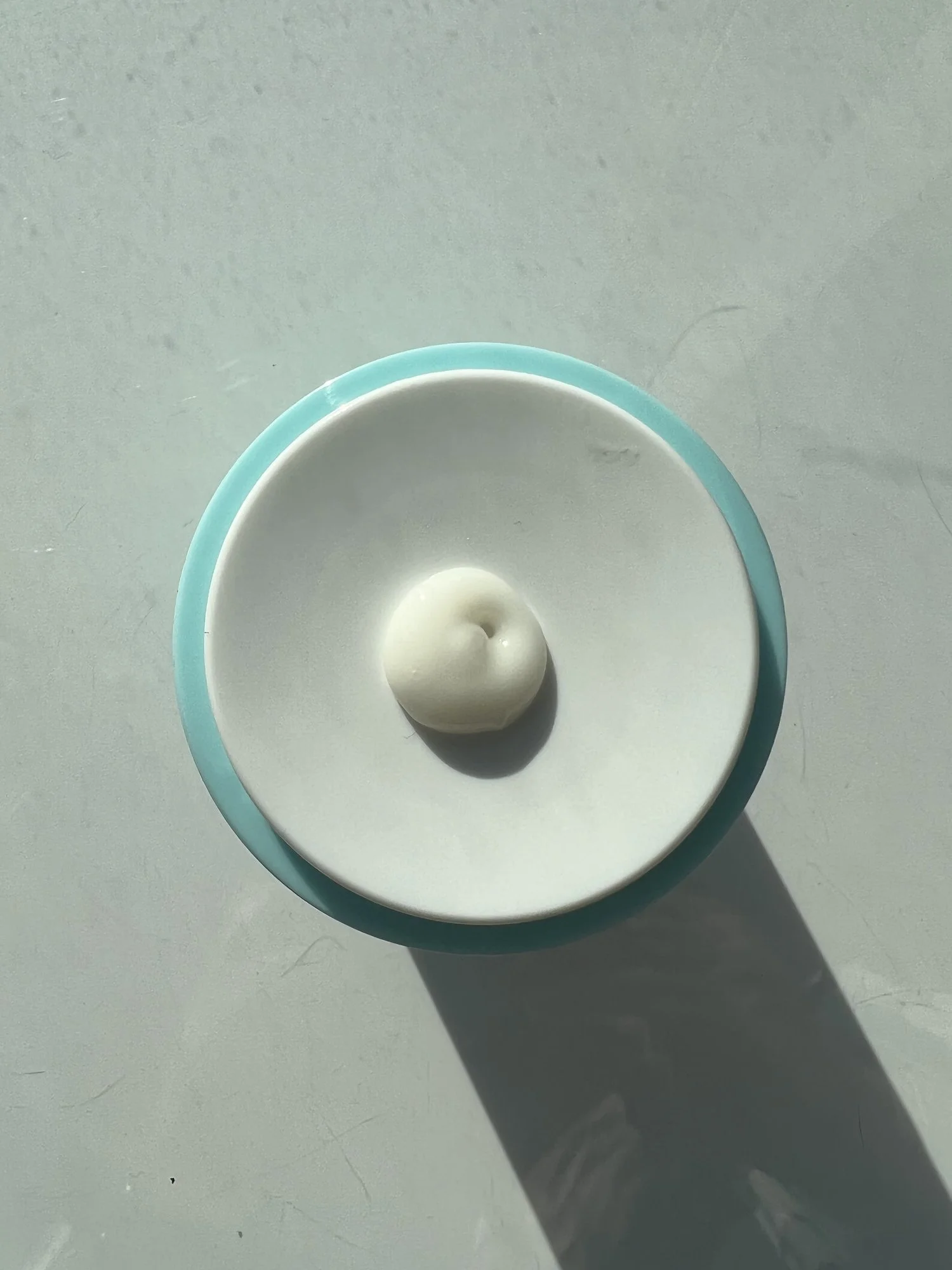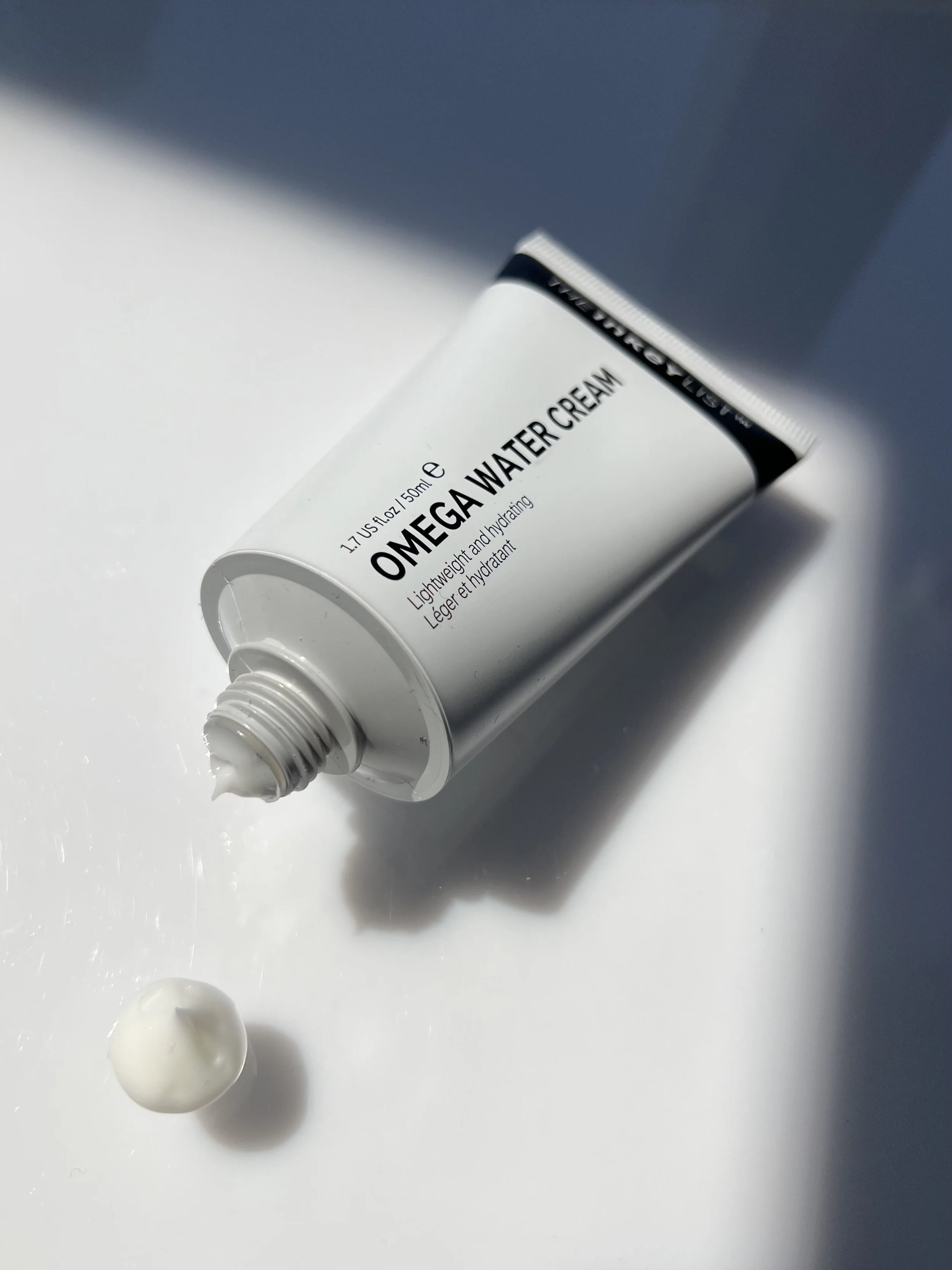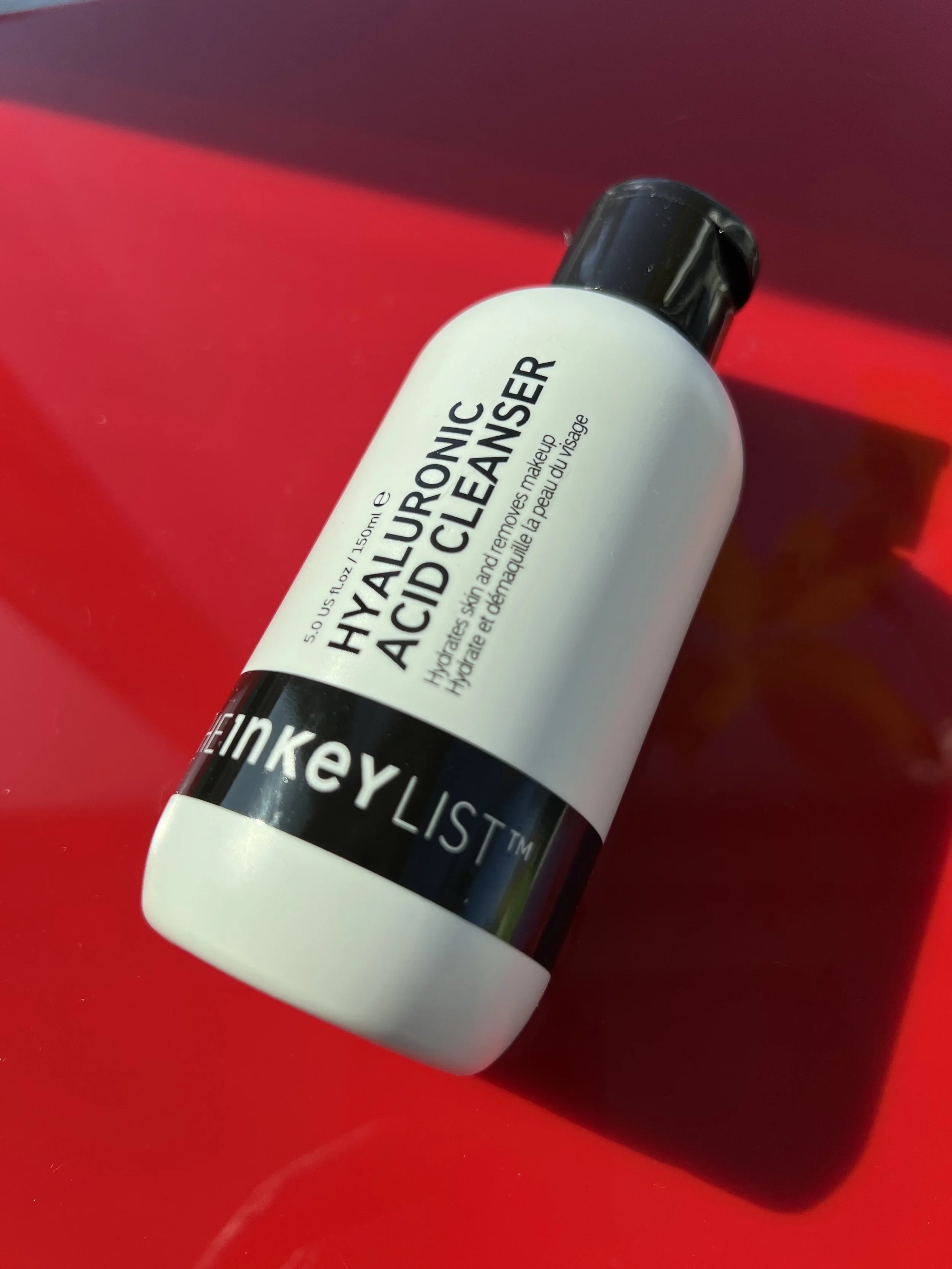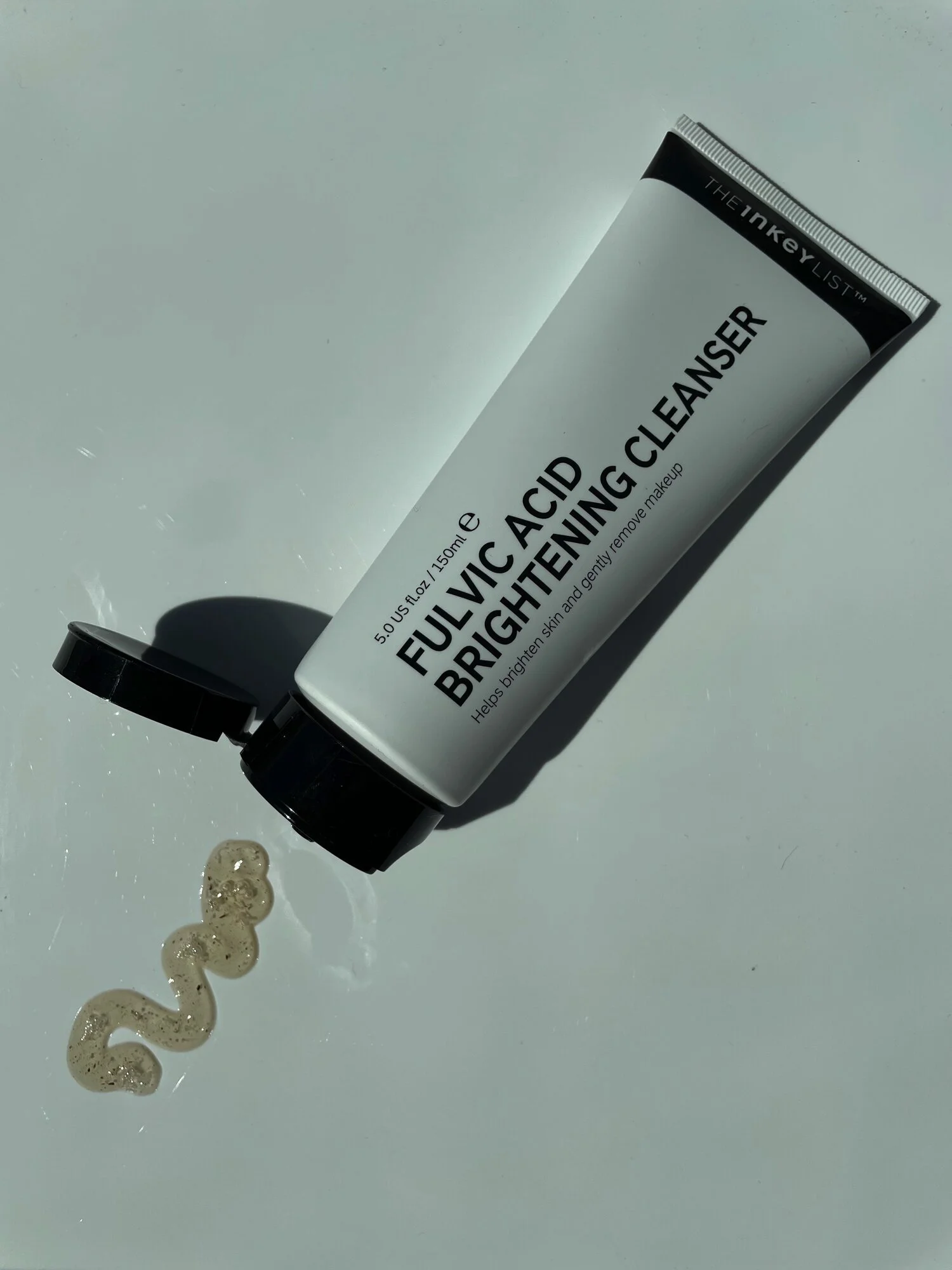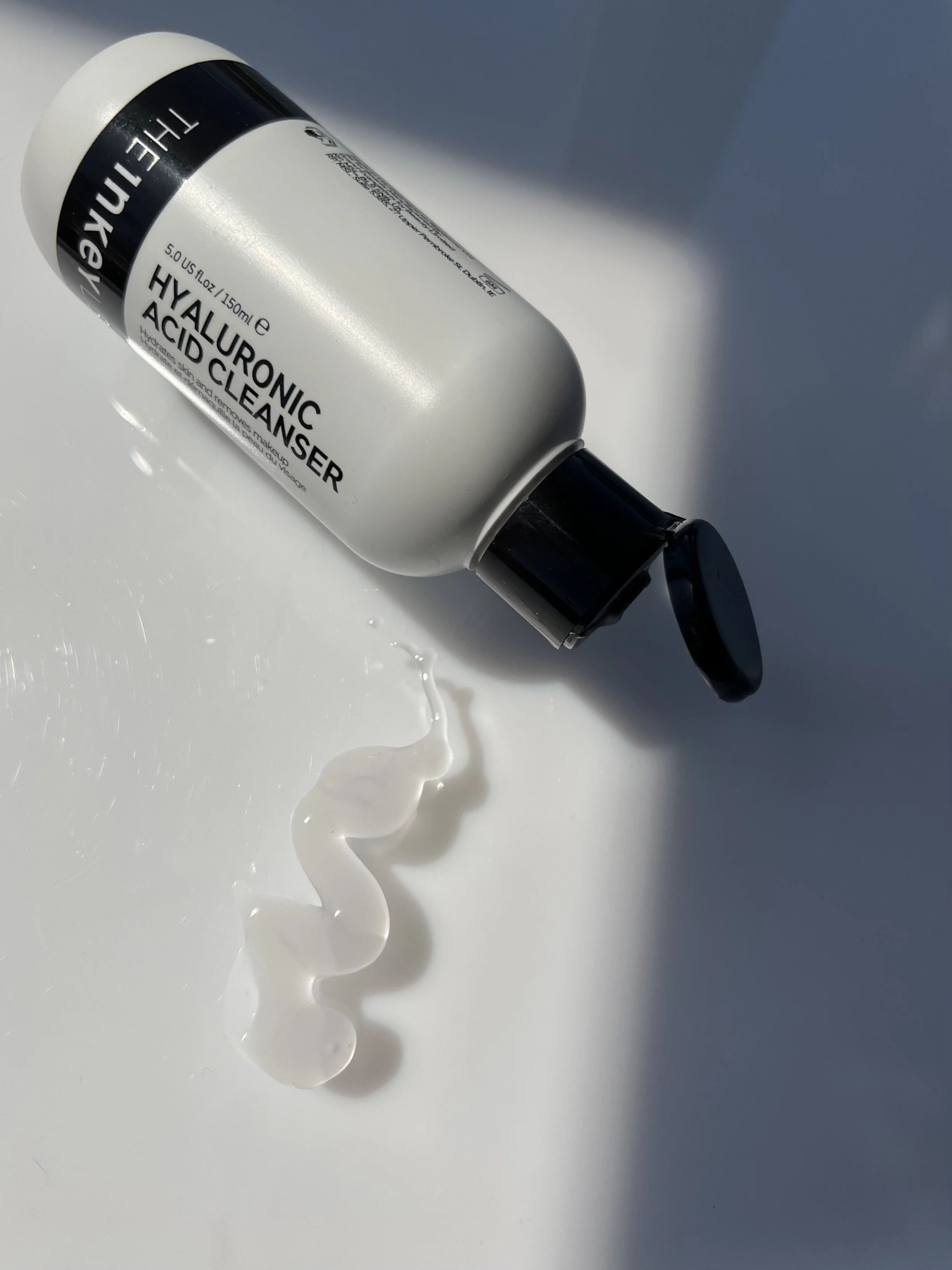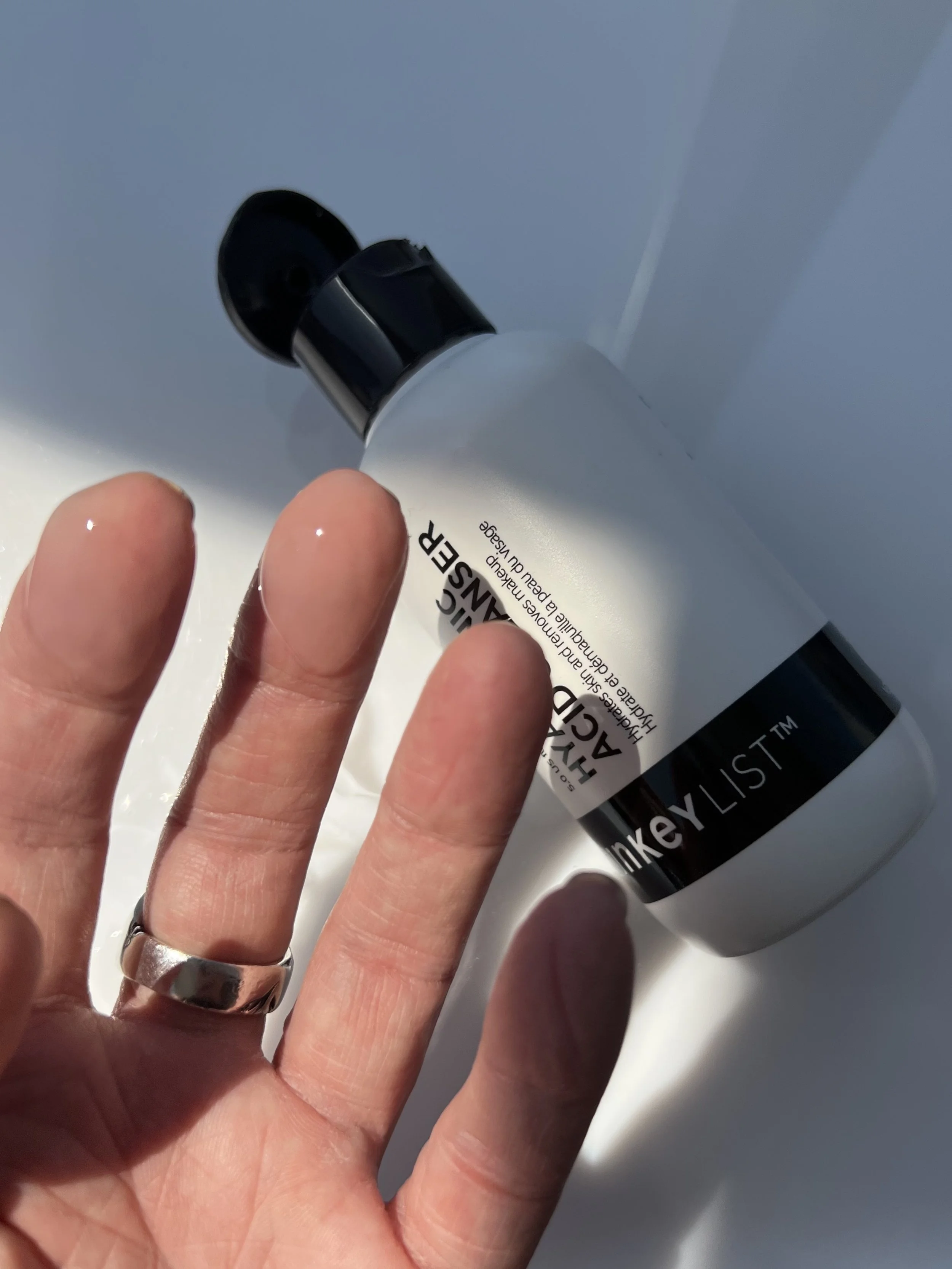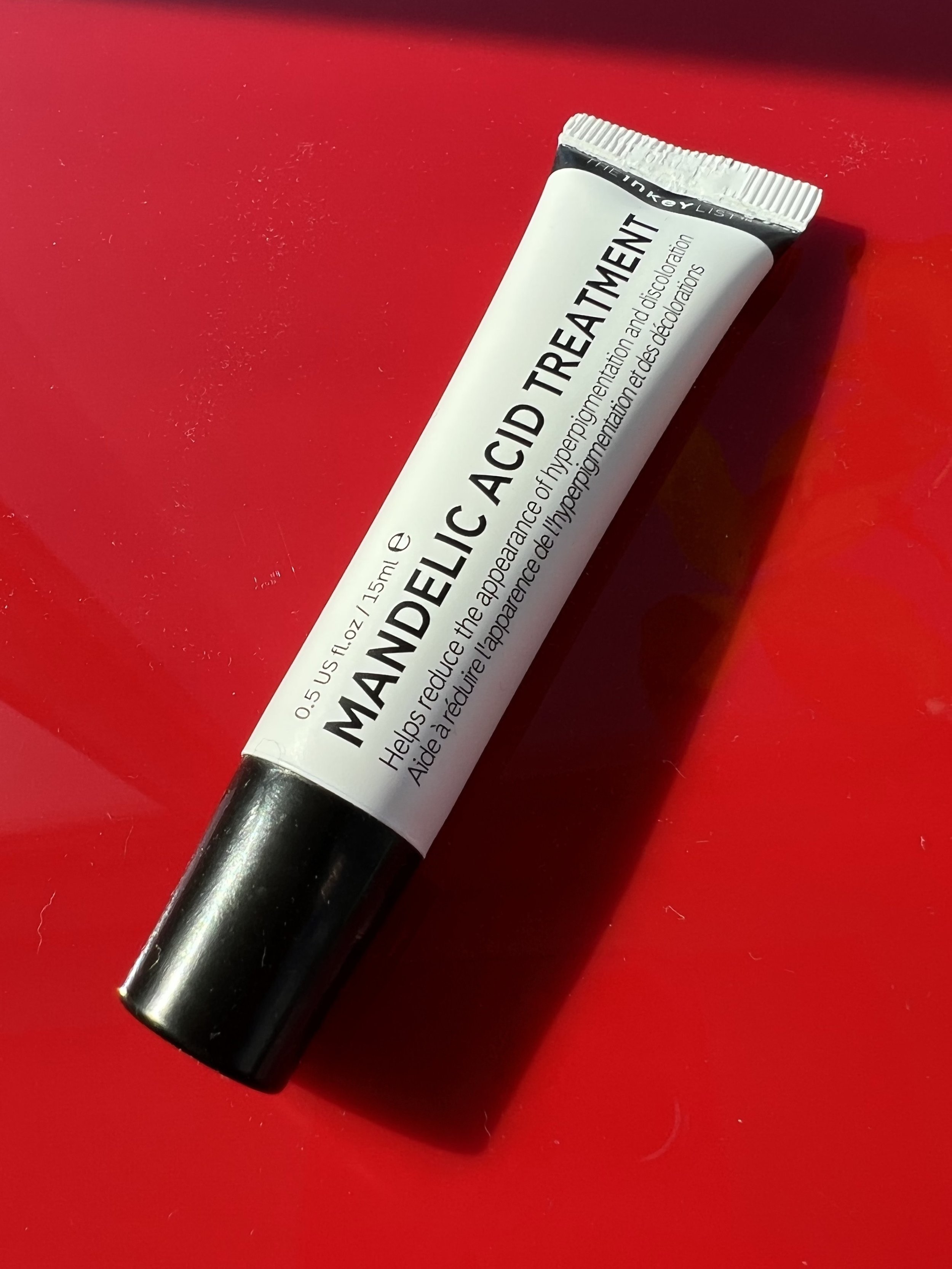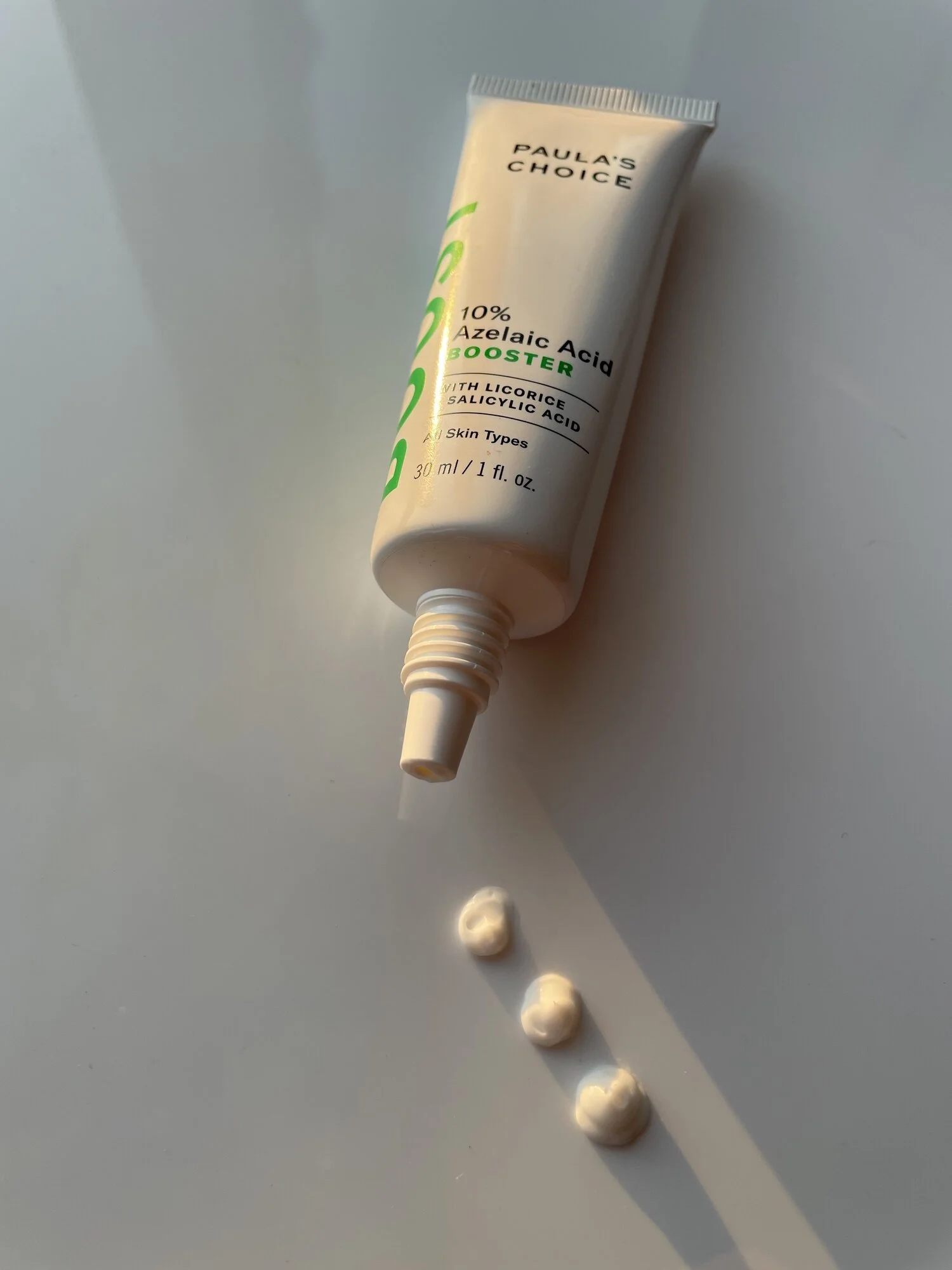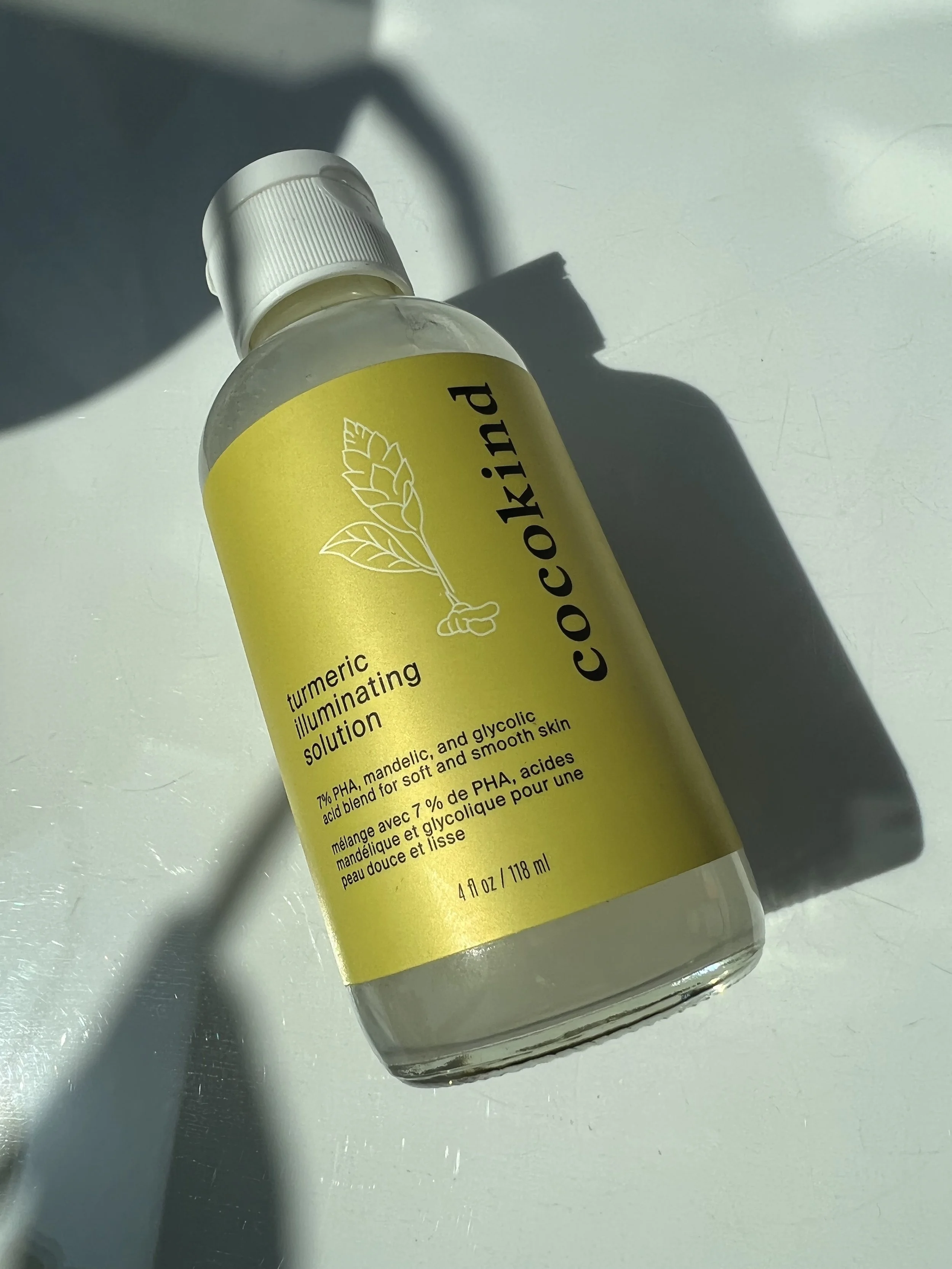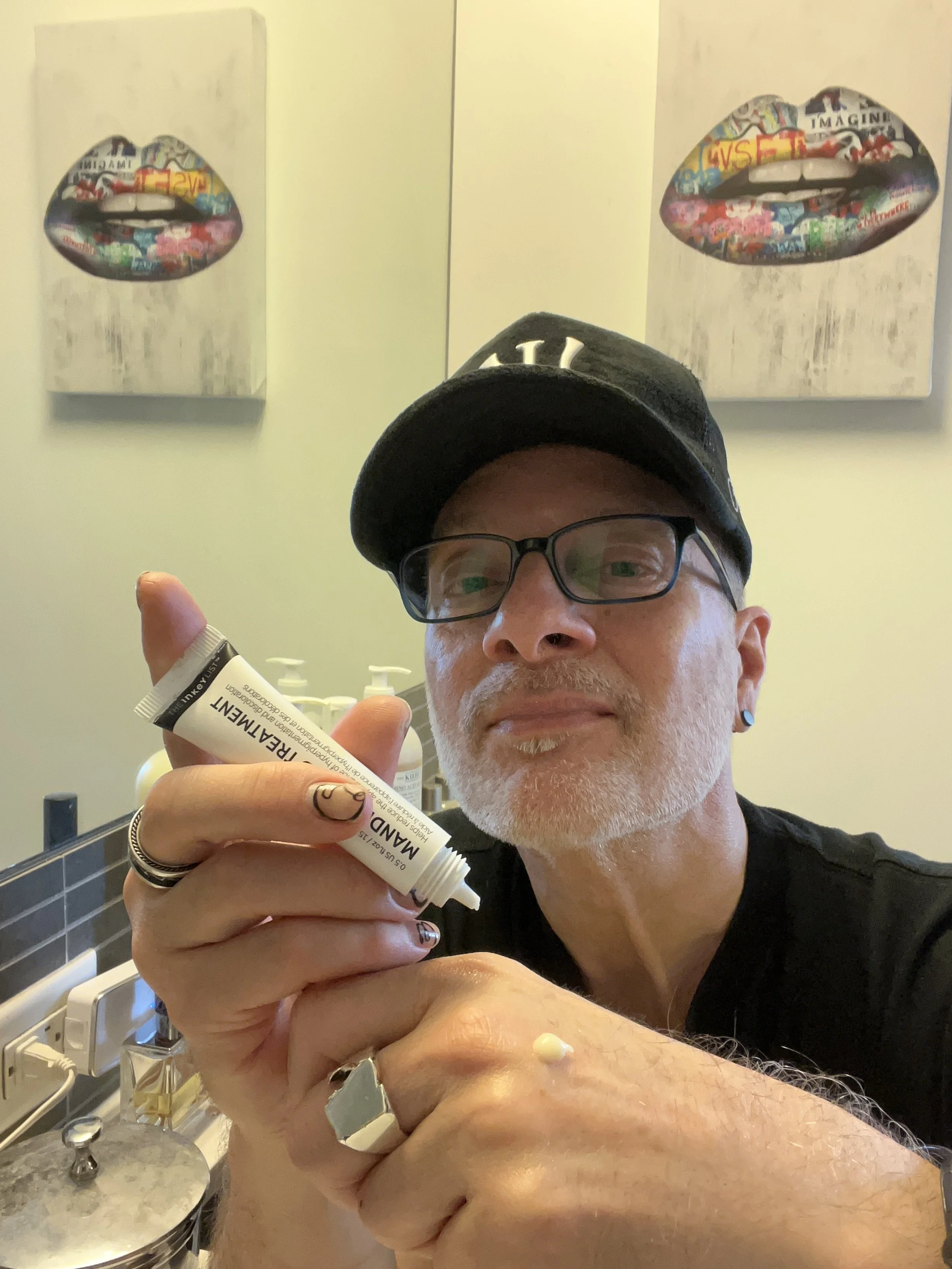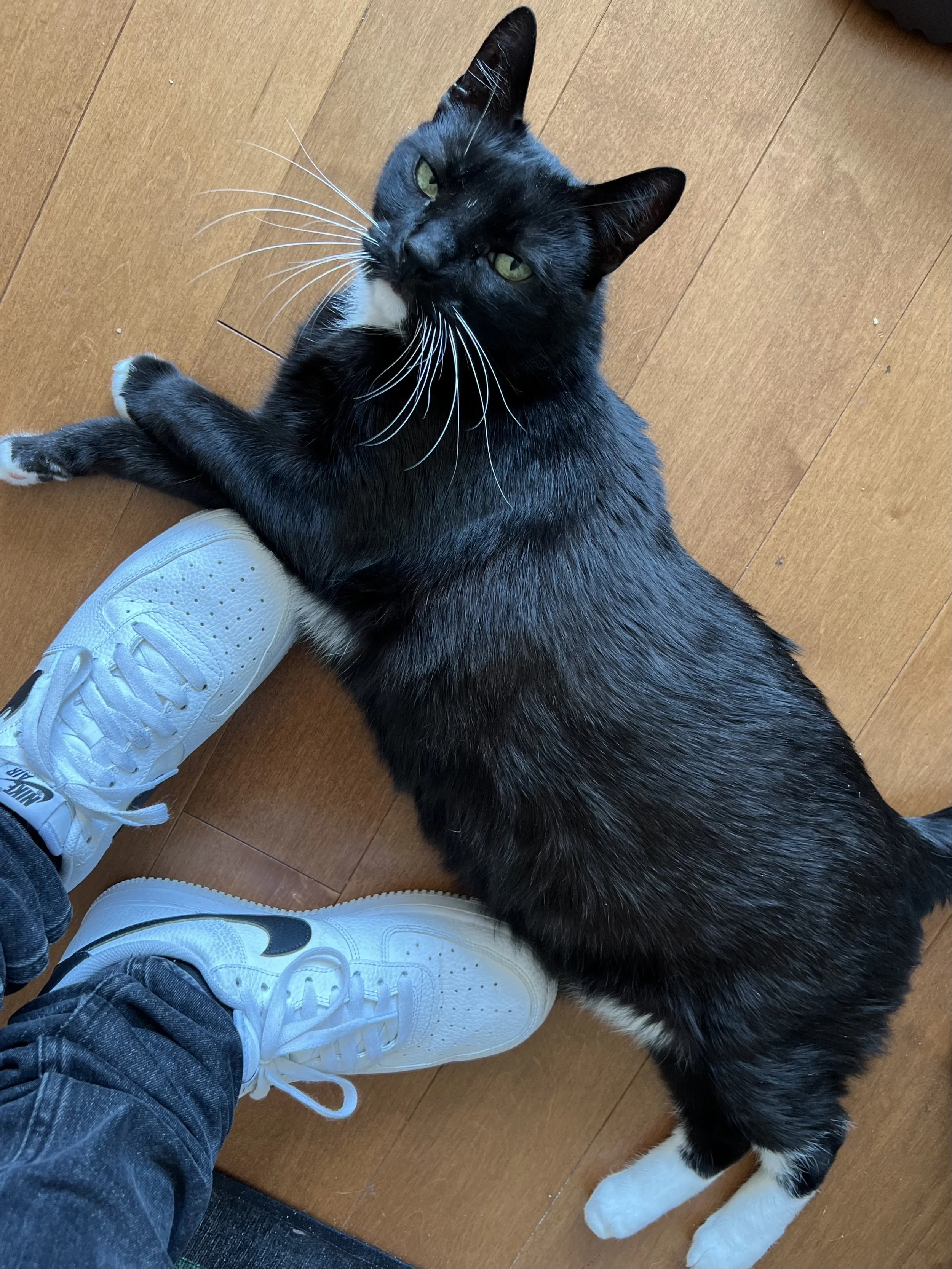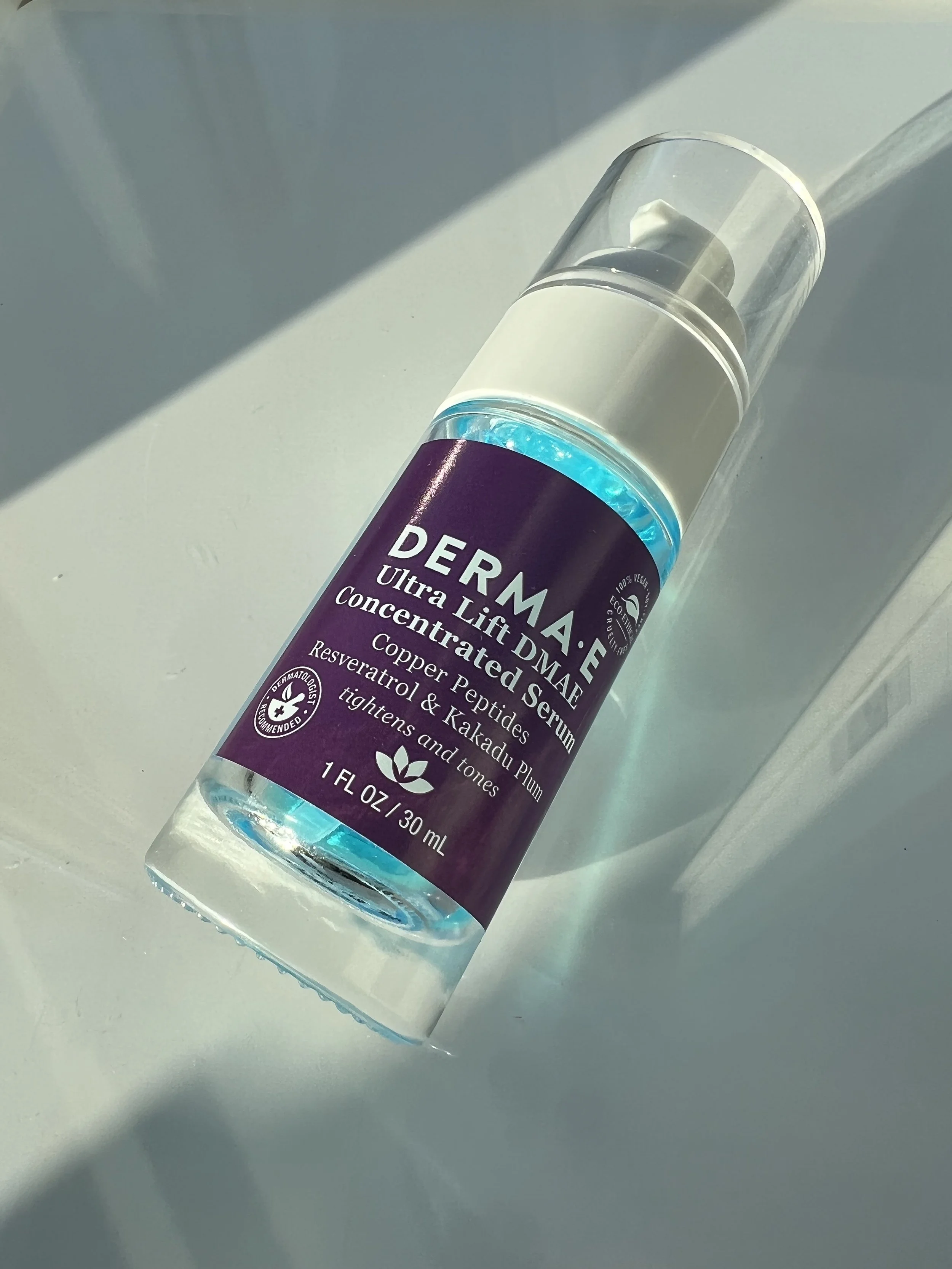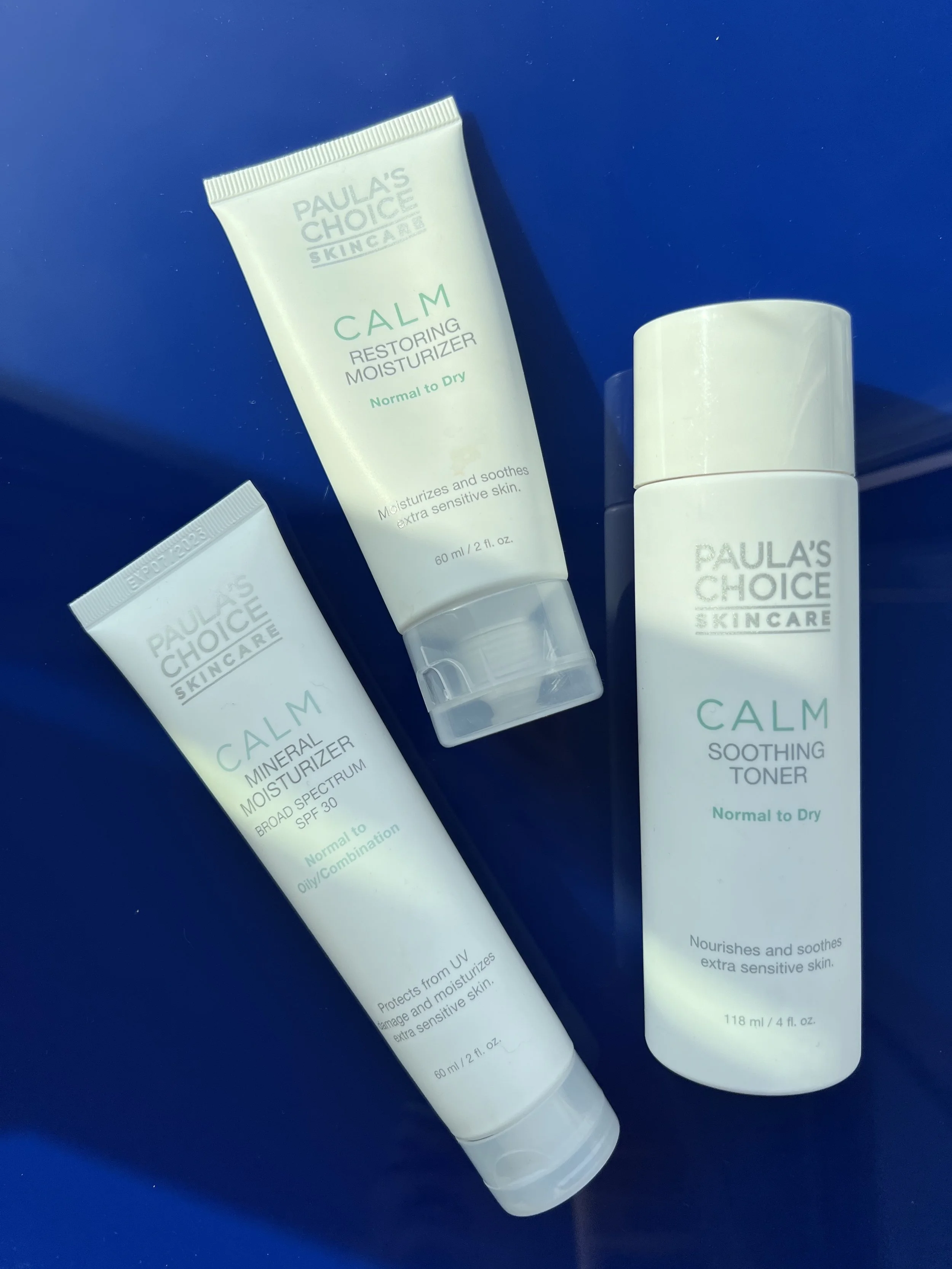PRODUCTS I'M INTO: NEW STUFF FROM THE INKEY LIST - BEST EXFOLIATING SERUM WITH MANDELIC ACID, BEST FACE CREAM FOR OILY SKIN
I love discovering new things. Whether it’s cool TikTok beauty hacks, innovative skincare treatments or delicious vegan treats, it’s the little things that make my days delightful.
And, well, vegan donuts are where it’s at.
I took the train to Connecticut to hang out with family over the weekend. I was in sync with the subway schedule and made it to Grand Central Station with 30 minutes to spare. Thirty minutes at Grand Central is an adventurer’s dream come true.
So I ventured downstairs, the lower level of the station, to grab coffee and a bite to eat. And lo and behold, there was a new Doughnut Plant calling my name. I had heard that New York-based shop has a selection of vegan donuts and knew it was about to be magical. Sure enough, they had three options, including a pistachio glazed donut. Seriously?! As a kid, pistachio ice cream was my favorite and that vegan pistachio donut was everything.
Good thing Orpheus and I started the day with an early yoga session!
Just ahead of vegan donuts on the delight scale are innovative skincare products. And when it comes to cool, new stuff I’d never imagined, let alone heard of, The Inkey List has long been an innovation machine.
One of my favorite new Inkey products over the past year is the brand’s Succinic Acid Acne Treatment. I’m always seeking out new acne products — and particularly gentle, effective blemish serums and creams that don’t dry out the skin and compromise the delicate microbiome. That only perpetuates the acne cycle; it’s the reason so many people struggle with acne longterm.
The Inkey List’s Succinic Acid Acne Treatment is a blend of two tried-and-true, proven acne treatment actives, Sulfur Powder and Salicylic Acid. By themselves, they’re not innovative. But combined with Succinic Acid, an ingredient I’d never heard of until Inkey imagined it, you’ve got acne innovation. In the year since the product launched, I’ve seen Succinic Acid in several other acne products. The Inkey List didn’t event it, but they kicked off a trend!
PRODUCT REVIEW: THE INKEY LIST SUCCINIC ACID ACNE TREATMENT – BEST GENTLE ACNE TREATMENT
What Is Succinic Acid and What Does Succinic Acid Do for Skin?
In my initial review of The Inkey List’s Succinic Acid Acne Treatment, I wanted to know more about the mysterious sounding ingredient and found an insightful piece on the Refinery29 website titled, I Used Buzzy Ingredient Succinic Acid For 4 Weeks & It Changed My Skin.
What is succinic acid and how can it treat acne, fine lines and wrinkles?
“Naturally found in amber or sugar cane, succinic acid is sustainably obtained through a process of fermentation and is similar in aim to salicylic acid. It has skin-softening and bacteria-inhibiting properties and helps to control sebum, therefore reducing shine and excess oil, which can potentially lead to breakouts. It also restores the skin’s pH balance – something some skincare products (such as foaming cleansers or harsh exfoliating acids) can disrupt, causing redness, dryness and cracked skin.
“Although new to us in the beauty industry, succinic acid has been used in European countries for many years for its medicinal properties. Its skincare properties are especially intriguing, though. ‘As succinic acid balances oily and congested complexions, it’s ideal for patients with acne,’ says skin expert and facialist Renée Lapino. ‘This leads to fewer spots and blackheads. But succinic acid also reverses the visible signs of ageing, and is especially useful for those with sensitive skin that gets red or irritated easily.’”
The Succinic Acid Acne Treatment has become one of my go-to blemish treatments for my occasional breakouts. It’s quite effective — and never dries out my skin. I have Inkey innovation to thank for that!
Over the last several weeks, the brand has been on a roll with multiple new product introductions and I’ve been excited to give them all a try. Three of them stand out to me, featured in the blog.
The Inkey List Omega Water Cream Moisturizer is a wonderfully light, refreshing lotion that’s slightly thicker than a conventional gel-cream. With the change of seasons and warmer weather ahead, it couldn’t have come at a better time.
I love a good cleanser! Among my favorites for warmer weather is a gel type cleanser. Often, however, even the best cleansing gels can dry out the skin. Inkey infused their new Hyaluronic Acid Cleanser with an innovative complex of humectants and hydrators to infuse skin with moisture and prevent dryness. It’s so cool and such a pleasure to use!
Last is The Inkey List Mandelic Acid Treatment for the treatment of acne marks — one of the most vexing acne-related conditions to treat. Even I deal with leftover signs of acne in the days and weeks after the blemish has been eradicated. Mandelic Acid is hot in skincare right now and this new treatment really intrigues me.
Let’s take a look at three of The Inkey List’s latest innovations for SS22 in more detail…
The Inkey List | Omega Water Cream Moisturizer
With the change of seasons upon us here in NYC, I’ve been switching up my skincare to lighter, fresher, more comfortable textures. Over the course of the winter, when the low-humidity air sucks the water (and the life!) out of my face, I rely on rich, lipid-replenishing and occlusive moisturizers.
Among the best face creams for dry skin and all skins in the cold is the Skinfix Barrier+ Triple Lipid-Peptide Face Cream. Since October, I used up three jars of Skinfix’s best-selling product and one of the most popular moisturizers on the Sephora website. The brand’s TLPC is clinically proven to replenish lipids like ceramides and fatty acids, essential to defending against trans-epidermal water loss (TEWL). In fact, TEWL is the leading cause of dehydration and one of the key causes of skin aging — right behind unprotected sun exposure.
PRODUCT REVIEW: SKINFIX BARRIER+ TRIPLE LIPID-PEPTIDE FACE CREAM AND TRIPLE LIPID-BOOST 360° EYE CREAM
What Is Trans-Epidermal Water Loss (TEWL)?
Trans-epidermal water loss, or TEWL, is the leading cause of dehydration — or insufficient water in the skin’s layers. Just as the body needs sufficient quantities of water each day to survive, the skin needs water to function in an optimally healthy manner. Dehydrated skin compromises skin barrier function, diminishing the skin’s ability to fortify itself against external aggressors.
For a deep-dive into trans-epidermal water loss, there’s an excellent article on the health website Skin Better titled, What Is Transepidermal Water Loss and Why Is it Important? It’s available to read here. In the piece, the author explains TEWL as follows:
“The skin is comprised of three primary layers: the epidermis, the outermost layer; the dermis or middle layer; and the hypodermis, the undermost layer. When water passes from the dermis through the epidermis and evaporates from the skin’s surface, this is known as transepidermal water loss (International Journal of Pharmaceutics).
While TEWL is a process that your skin naturally regulates, certain factors that can damage the skin’s barrier function can also affect TEWL levels. Circumstances such as injury, low-humidity weather conditions and topically applied products that dry out the skin can impact TEWL.
To achieve this, combine humectant and occlusive skincare ingredients.
Transepidermal water loss can contribute to a variety of dry skin conditions, and although it is a natural process, there are ways that you can help your skin stay moisturized and hydrated. Hydration refers to the water content of the skin, whereas moisturization is the skin’s ability to retain those water molecules. Therefore, your skin needs both elements to maintain desirable levels of TEWL.
To achieve this, combine humectant and occlusive skincare ingredients. Humectants help to draw moisture to the epidermis, either from the air if it is humid enough, or from the underlying dermis in low-humidity conditions. Because water content that is drawn from the dermis can be lost through TEWL, it’s important to combine the use of humectants with occlusives. Together, these ingredients create a reservoir of moisture in the epidermis and act as a barrier on the skin to help prevent TEWL by sealing in that moisture. The occlusive agents simultaneously keep pollutants, toxins and harmful bacteria out (Skin Therapy Letter).”
PRODUCT REVIEW: SKINFIX BARRIER+ SKIN BARRIER RESTORING GEL CREAM – BEST FACE CREAM FOR OILY SKIN
Skinfix knows the change of seasons means lighter textures and the brand recently introduced its new Skin Barrier Restoring Gel Cream, which I reviewed on the blog here.
The Skin Barrier Restoring Gel Cream has a super light gel-cream texture that glides on easily and is immediately absorbed into the skin. The texture makes it the ideal face cream for oily skin. While the texture isn’t unique as far as lightweight face creams go, IMO it’s likely the best gel-cream moisturizer on the market.
So I was eager to try out The Inkey List’s Omega Water Cream Moisturizer, which was recently introduced. Similar to the Skinfix Skin Barrier Restoring Gel Cream, the new gel-cream moisturizer from The Inkey List has a light, refreshing texture that feels like nothing on the skin – perfect for a warm spring day.
And not unlike the Skinfix TLPC, the Omega Water Cream Moisturizer is formulated with bio-compatible lipids that the skin craves — and soaks right up. The Inkey List has infused their new, velvety gel-cream with what the brand identifies as a 0.5% concentration of “Ceramosides.” I believe these appear in the formula INCI as both glycosphingolipids and glycolipids.
What are glycolipids? Well, according to the experts on the Paula’s Choice Research Team, glycolipids are a lipid, or fat, that’s composed of both lipids and sugar. I don’t know that glycolipids are any more beneficial for the skin than other more common lipids like ceramides and fatty acids. Skin (like taste buds!) loves fats of all kinds.
What Are Skin Lipids and Are Lipids Good for Skin?
There’s an insightful article on the Dermstore website titled, The Role of Lipids—Cholesterol, Ceramides and Fatty Acids—in the Aging Process which you can read here.
Lipids in Your Skin
In a nutshell, lipids are skin’s natural fats. They are essential components of skin and play a crucial role in maintaining the strength of the skin’s protective barrier, which holds moisture, protects the skin from damage and keeps dirt and impurities out. They also aid the skin’s natural repair process. While there are many types of lipids, these three are the most prevalent—and important—for the skin.
Cholesterol: This lipid helps accelerate the skin barrier’s recovery and improve the appearance of skin elasticity. Visible skin aging is often caused by cholesterol deficiency on the skin. It’s important to note that cholesterol on your skin is different from the cholesterol found in the blood, and having more of it on your skin won’t cause your blood pressure to spike.
Ceramides: This type of lipid is proven to increase the skin’s hydration and barrier function. Ceramide deficiency is the main cause of dry skin.
Fatty acids: Abundant in young, healthy skin, fatty acids help maintain the skin’s lipid balance.
The Role of Topical LipidsHealthy, youthful skin has an abundance of these naturally occurring lipids. As we age, lipid production declines, and this can result in rough surface texture, uncomfortable tightness, dullness and loss of facial fullness. A compromised skin barrier is also more prone to irritation and water loss. This is why it’s important to counter the effects of lipid loss with a topical treatment—but not just any topical treatment.
A basic moisturizer for just about $10, The Inkey List’s Omega Water Cream Moisturizer is the best face cream the brand has offered to date. In addition to the pro-skin health, replenishing glycolipids that help to prevent trans-epidermal water loss, it’s infused with humectants that help to bind to and hold water in the skin.
But what I love most in the INCI is the 5% concentration of brightening, antioxidant Niacinamide. That’s a significant amount of Niacinamide, which is generally at or below the recommended 2% for a face cream. Bravo Inkey!
What I like about it: The Inkey List Omega Water Cream Moisturizer is IMO the best face cream the brand has offered to date. I love its light, refreshing texture that’s quickly absorbed by the skin. Its blend of occlusive and water-binding lipids and humectants is ideal for preventing TEWL. And, the 5% concentration of antioxidant Niacinamide is exceptional for a moisturizer.
What I don’t like about it: I like everything about it. It’s a simple, affordable and effective moisturizer for everyone. Could it use a few protective antioxidants? Sure. But that would bump up the price.
Who it’s for: All skin types, especially oily skins.
SHOP THE BLOG: Purchase The Inkey List Omega Water Cream Moisturizer for $9.99 here.
The Ingredient List of The Inkey List Omega Water Cream Moisturizer:
 sii|h 0 0, Niacinamide
sii|h 0 0, Niacinamide  cci|sb|aacne|h, Propanediol solv|h, Betaine
cci|sb|aacne|h, Propanediol solv|h, Betaine  h, Polyglyceryl-4 Isostearate emu, Coco-Caprylate/Caprate emo, Magnesium Sulfate vc, Glycosphingolipids emo, Glycolipids, Sodium Benzoate pres, Disteardimonium Hectorite vc, Oleic Acid emo|emu, Potassium Sorbate pres, Citric Acid buff, Polyglycerin-3 h
h, Polyglyceryl-4 Isostearate emu, Coco-Caprylate/Caprate emo, Magnesium Sulfate vc, Glycosphingolipids emo, Glycolipids, Sodium Benzoate pres, Disteardimonium Hectorite vc, Oleic Acid emo|emu, Potassium Sorbate pres, Citric Acid buff, Polyglycerin-3 hThe Inkey List | Hyaluronic Acid Cleanser
If you’ve followed my blog antics for a while and, in particular, watched my skincare videos on my YouTube channel, you know that cleansing is ritualistic for me. Yes, I love a good cleanser, and especially a cleansing gel — IMO the best facial cleanser for part two of a double cleanse.
And among my favorite cleansers happens to be a cleansing gel from The Inkey List, introduced perhaps two years ago. In true Inkey fashion, the brand’s Fulvic Acid Brightening Cleanser is one part innovation, one part intrigue. Sure it sounds super weird and nerdy, but that’s what I love about Inkey!
In my original product review of the Fulvic Acid Brightening Cleanser, I learned that fulvic acid is extracted from “soils, compost, marine sediments, and sewage” and acts like a gentle exfoliant. I have some degree of confidence that the fulvic acid in Inkey’s brightening cleanser isn’t sourced from sewage. I’m not worried. I love the stuff!
PRODUCT REVIEW: THE INKEY LIST FULVIC ACID BRIGHTENING CLEANSER - BEST BRIGHTENING CLEANSER
Similar to The Inkey List’s Fulvic Acid Brightening Cleanser, the brand’s new Hyaluronic Acid Cleanser is a refreshing cleansing gel with only a slight foaming effect. Cleansers that foam a lot are fun to use, but aren’t very gentle on the skin. So I appreciate Inkey so much for that.
And the brand’s new Hyaluronic Acid Cleanser couldn’t have come at a better time. The temps are slowly, but surely heating up and I’m switching up all my skincare, including the cleansers I reach for in my daily routines.
It may seem like cleansers aren’t often very innovative or unique. But a close look at the INCI of the The Inkey List’s latest cleansing introduction and there’s innovation everywhere. Most notably, the Hyaluronic Acid Cleanser contains a complex of three hydrating actives.
There’s classic humectant Hyaluronic Acid, a plant-based sugar complex called PolyFructol Plus, and Betaine Powder — a bio-compatible active found in the body that helps the body metabolize a certain amino acid. The three combine to hydrate skin by holding water in the skin’s layers and preventing dryness in the first place.
Seriously, what’s PolyFructol Plus though? I just had to go googling! According to the ingredient’s manufacturer, “PolyFructol Plus is a highly concentrated solution of the plant-based oligosaccharide inulin which is combined with lecithin derived liposomes that efficiently improve skin hydration.”
As I often am with The Inkey List’s new product offerings, I’m so intrigued by their imaginative use of skincare ingredients. As with the Succinic Acid in the brand’s Succinic Acid Acne Treatment, even something as simple as a non-stripping, non-drying facial cleanser teaches me something new about ingredient efficacy.
As a non-stripping cleanser, the Hyaluronic Acid Cleanser is formulated with a coconut-derived surfactant, Coco-glucoside, formed through a chemical reaction between glucose, or sugar, and coconut oil-derived ingredients.
I’m not kidding when I say that this new cleanser barely foams. If you love a foaming cleanser, this one isn’t for you. But if you appreciate the gentle benefits of a low-foaming cleanser like I do, the Hyaluronic Acid Cleanser will blow you away.
Cleansers don’t have to foam to be effective. They can do so just as effectively by breaking down surface oils, dirt and bacteria more gently. And this is the most gentle and pleasurable cleanser I’ve come across since the Josie Maran Pineapple Enzyme Pore Clearing Cleanser, which I reviewed on the blog here.
If you’re looking for a gentle hydrating cleanser, The Inkey List’s Hyaluronic Acid Cleanser is an ideal option.
What I like about it: The Inkey List Hyaluronic Acid Cleanser is one of the most gentle cleansers I’ve experienced. I love its complex of hydrators that helps to prevent skin dehydration and trans-epidermal water loss. And its low-foaming quality is truly ideal in a cleanser. At least for me! Plus, it’s just $9.99.
What I don’t like about it: I like everything about this hydrating gel cleanser.
Who it’s for: All skin types.
SHOP THE BLOG: Purchase The Inkey List Hyaluronic Acid Cleanser for $9.99 here.
The Ingredient List of The Inkey List Hyaluronic Acid Cleanser:
 sii|h 0 0, Coco-Glucoside surf, Betaine
sii|h 0 0, Coco-Glucoside surf, Betaine  h, Cetearyl Alcohol emo|vc|emu|surf 1 2, Stearic Acid emo|vc 0 2-3, Phenoxyethanol pres, Benzyl Alcohol pres|perf|solv|vc, Xanthan Gum vc, Acrylates/C10-30 Alkyl Acrylate Crosspolymer vc, Inulin
h, Cetearyl Alcohol emo|vc|emu|surf 1 2, Stearic Acid emo|vc 0 2-3, Phenoxyethanol pres, Benzyl Alcohol pres|perf|solv|vc, Xanthan Gum vc, Acrylates/C10-30 Alkyl Acrylate Crosspolymer vc, Inulin  , Ethylhexylglycerin pres, Sodium Hydroxide buff, Dehydroacetic Acid pres, Polyquaternium-10 vc, Trisodium Ethylenediamine Disuccinate chel, Hydrolyzed Sodium Hyaluronate h, Sodium Hyaluronate
, Ethylhexylglycerin pres, Sodium Hydroxide buff, Dehydroacetic Acid pres, Polyquaternium-10 vc, Trisodium Ethylenediamine Disuccinate chel, Hydrolyzed Sodium Hyaluronate h, Sodium Hyaluronate  sii|h 0 0, Lecithin
sii|h 0 0, Lecithin  emo|emu
emo|emuThe Inkey List | Mandelic Acid Treatment
Spots in the complexion are generally among the most difficult skin conditions to treat. There are numerous types of spots — from dark spots, sun spots and age spots to hyperpigmentation, acne marks and even scars. How to minimize the look of darks spots, and even make them disappear altogether, is one of the most common questions I get from readers of the blog, friends, and family members alike.
Here’s the thing. As with wrinkles, it’s best to prevent spots in the first place. And like wrinkles, many spots are caused by unprotected sun exposure. If dark spots and hyperpigmentation are an ongoing concern for you, you may want to consider stepping up your protection from UV damage by finding an effective, broad-spectrum sunscreen and using it religiously.
Find a facial sunscreen you love so much that you wouldn’t even think of not applying it each morning; one with both a high SPF (I recommend SPF 30+) and a high PA+++ rating — the measure of a product’s protection against more insidious UVA rays. Check out my top recommendation of the best sunscreens for face here.
The Best Sunscreens For Face
So, yes, a well-formulated facial sunscreen will go a long way toward addressing dark spots by preventing them from getting worse — and from forming in the first place. But what about existing dark spots and acne marks?
A close friend from Los Angeles recently reached out to me in what could best be described as panic mode. He had seen a TikTok video of mine earlier in the day and texted me about it. “Your complexion is perfect. Ugh. I need help with these dark spots!”
Regrettably, I’ve been imploring him for years to use a daily sunscreen — to no avail. But I was willing to help. It told him it’s essentially an all-hands on deck situation; that is, he needed to do everything I say and use every product I recommend in complete, distinct AM and PM regimens. He agreed.
I created an entire new skincare routine for him that included high potency serums, replenishing face creams and, yes, a daily sunscreen. The serums were centered around Vitamin C, Niacinamide and Azelaic Acid — a relatively new-to-the-scene active for brightening and unifying the complexion. My pick for him was one of the best Azelaic Acid treatments, the Paula's Choice 10% Azelaic Acid Booster.
PRODUCT REVIEW: PAULA'S CHOICE 10% AZELAIC ACID BOOSTER
And while both the recommended Paula’s Choice C15 Super Booster and Paula’s Choice 10% Niacinamide Booster will help to brighten his complexion and tone down the appearance of his existing dark spots, I wanted to add in an effective spot treatment, powered by potent acids.
It just so happened that The Inkey List had recently introduced their new treatment for dark spots and acne marks, the Mandelic Acid Treatment. And I had been wanting to test it out on darks spots. But, thankfully, I had none of my own to treat!
So my friend has been the guinea pig, so to speak. In conjunction with the three brightening serums in the regimen, The Inkey List’s Mandelic Acid Treatment seemed the perfect solution for targeting his dark spots.
One of the class of alpha hydroxy acids, or AHA’s, Mandelic Acid has been getting more and more attention lately. It’s the most gentle of the six or so AHA’s, at the exact opposite end of the scale as powerhouse Glycolic Acid.
What Is Mandelic Acid and What Does Mandelic Acid Do for the Skin?
There’s a very succinct, well-sourced explanation of Mandelic Acid and its exceptional benefits for the skin, and particularly sensitive skin, from the experts on the Paula’s Choice Research Team. Here’s what they have to say…
Mandelic Acid at a Glance
Also known as amygdalic acid
An alpha hydroxy acid (AHA) that can exfoliate skin
Generally more tolerable for those with sensitive skin
Must be in opaque packaging to maintain its effectiveness
Mandelic Acid Description
Mandelic acid is a type of alpha hydroxy acid (AHA). There’s some research showing mandelic acid is an effective exfoliant, although it’s not as effective as glycolic acid due to its larger size (it’s twice as big as glycolic acid) and slower penetration into skin; however, these traits can also make mandelic acid more tolerable for those with sensitive skin. Unlike glycolic acid, mandelic acid is light-sensitive and must be packaged in an opaque container to remain effective. It may be synthetic or derived from almonds. Like other AHAs, mandelic acid is most effective in leave-on products that are within a 3-4 pH range.
A couple studies have shown that mandelic acid and salicylic acid worked well together in a higher-strength peel for use on darker skin tones struggling with discolorations, including post-acne marks. However, what we don’t know is how well mandelic acid would’ve worked on its own—it’s possible the results were more from salicylic acid than the combination of the two acids. Other research has shown mandelic acid can increase sebum (oil) production, which isn’t great for oily skin but would be a benefit for dry skin.
PRODUCT REVIEW: COCOKIND TURMERIC ILLUMINATING SOLUTION – BEST TONER WITH MANDELIC ACID
If you’re wary of harsh acids like Glycolic Acid, then Mandelic Acid deserves your attention. For the longest time, The Ordinary dominated the skincare market for Mandelic Acid with its unsung hero, Mandelic Acid 10% + HA. But I recently discovered Cocokind’s Turmeric Illuminating Solution and it’s quickly become one of my favorite treatment toners. It’s an absolute pleasure to use!
(Psst…you can catch my review of it on the blog here.)
With a 10% concentration of Mandelic Acid, The Inkey List Mandelic Acid Treatment is ideal for gently targeting dark spots in the complexion. The thick, velvety serum is made to adhere to the skin and remain in place, aiding in the effectiveness of the actives at treating a specific spot on the skin — much like the Paula’s Choice C25 Super Booster does so effectively.
The Mandelic Acid Treatment is also infused with encapsulated Retinol at 0.1% and several humectants and replenishing oils to prevent skin from drying out. I love the combination of the Mandelic Acid with Retinol as a solution for dark spots and hyperpigmentation. Each on its own is effective at accelerating cell turnover.
And while I haven’t been able to effectively and directly evaluate its efficacy at treating dark spots, I can attest to the fact that it is gentle enough on skin. I haven’t experienced any dryness or irritation. And, I can report that after nearly a month on his new regimen, my sun-exposed friend in LA says his complexion is much brighter and healthier looking. I’ll take it!
THE INKEY LIST’S CLINICALS FOR MANDELIC ACID TREATMENT
Clinically proven to significantly reduce hyperpigmented acne scars*
94% agreed the appearance of post breakout and blemish dark spots are significantly reduced*
94% agreed the appearance of dark spots and hyperpigmentation are significantly reduced*
94% agreed skin tone and texture is even with no significant signs of scarring*
*Based on an independent clinical trial under dermatological control, 20 participants, October 2021
What I like about it: The Inkey List Mandelic Acid Treatment is the most intriguing treatment for dark spots, acne marks and hyperpigmentation that I’ve seen since the launch of the Topicals Faded Serum For Dark Spots & Discoloration — which essentially takes an everything but the kitchen sink approach. I really appreciate its use of gentle Mandelic Acid to tackle the vexing problem of spots and post-acne marks. The clinicals are promising, for sure. And at just about $10, it’s worth a shot if you are struggling with dark spots and acne marks.
What I don’t like about it: I have no idea if it’s possible to formulate, but I would like to see a version of this product that includes a high concentration of Vitamin C. (Curiously, the Topicals Faded Serum doesn’t contain Vitamin C either!)
Who it’s for: All skin types.
SHOP THE BLOG: Purchase The Inkey List Mandelic Acid Treatment for $10.99 here.
Thanks for checking in on the Skincarma Blog! I hope you’ll give Inkey’s newest product introductions a closer look.
See you next week!
💟 Carmine @skincarma
The Ingredient List of The Inkey List Mandelic Acid Treatment:
Aqua (Water/Eau), Propanediol, Mandelic Acid, Coco-Caprylate/Caprate, Cetearyl Alcohol, Glycerin, Sodium Hydroxide, Caprylic/Capric Triglyceride, Glyceryl Stearate, Candelilla/Jojoba/Rice Bran Polyglyceryl-3 Esters, Sodium Stearoyl Glutamate, Phenoxyethanol, Sodium Stearoyl Lactylate, Benzyl Alcohol, Acrylates/C10-30 Alkyl Acrylate Crosspolymer, Copernicia Cerifera Cera, Retinol, Polysorbate 20, Ethylhexylglycerin, Dehydroacetic Acid, Helianthus Annuus Seed Oil, Trisodium Ethylenediamine Disuccinate, 1, 2-Hexanediol, Caprylyl Glycol, Disodium Cocoamphodiacetate, Tocopherol, Xanthan Gum, Ethyl Ferulate, Humulus Lupulus Extract.
WATCH MY VIDEO REVIEW
MY SUMMER EMPTIES : SUNSCREENS, VITAMIN C SERUMS & MORE FACIAL SKIN CARE!
ON MY YOUTUBE CHANNEL HERE
WATCH MY VIDEO REVIEW OF
COOL CLEAN FACIAL SUNSCREENS TO KEEP US SAFE AND SMILING IN THE SUN
ON MY YOUTUBE CHANNEL HERE
WATCH MY VIDEO REVIEW
THE YEAR’S BEST VITAMIN C SERUMS WITH THE ORDINARY, CLINIQUE, BEAUTY STAT & MORE!
ON MY YOUTUBE CHANNEL HERE
WATCH MY VIDEO REVIEW
THE YEAR’S BEST VITAMIN C SERUMS WITH PAULA'S CHOICE, SUNDAY RILEY, THE INKEY LIST AND MORE!
ON MY YOUTUBE CHANNEL HERE
WATCH MY VIDEO REVIEW OF
SKINCARE HACKS: GLYCOLIC ACID IS THE NATURAL DEODORANT THAT WORKS!
ON MY YOUTUBE CHANNEL HERE


